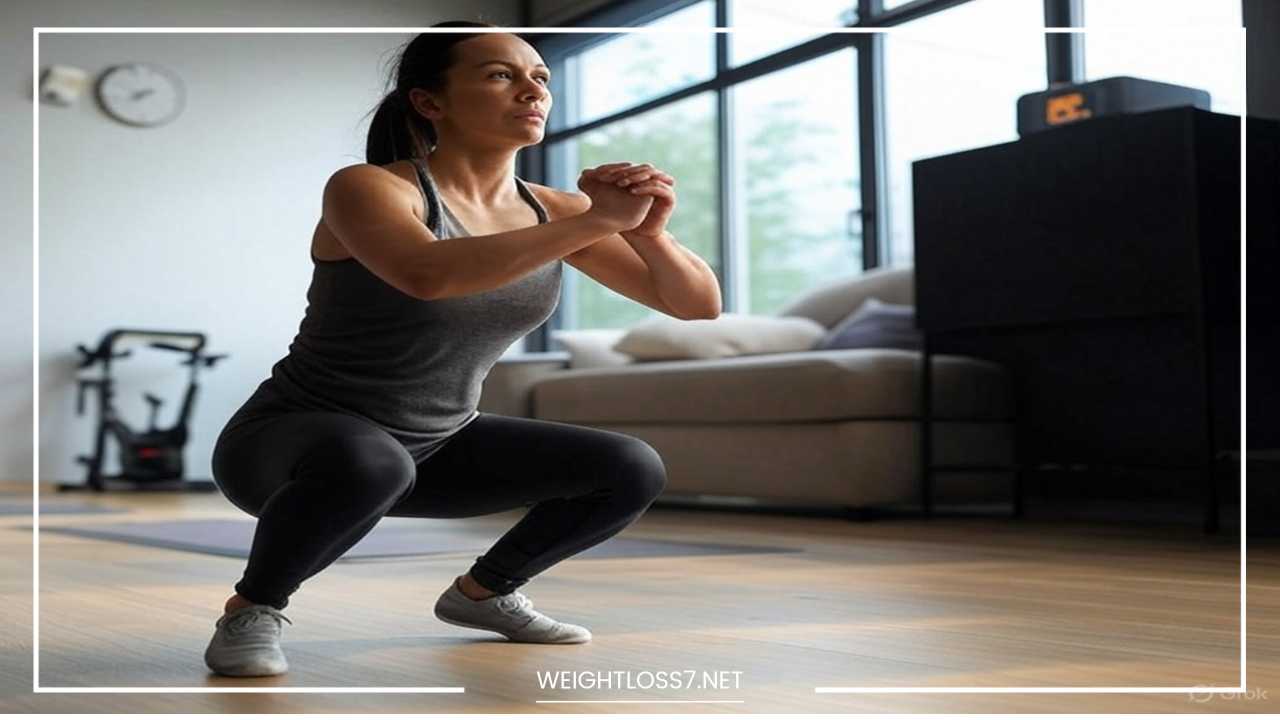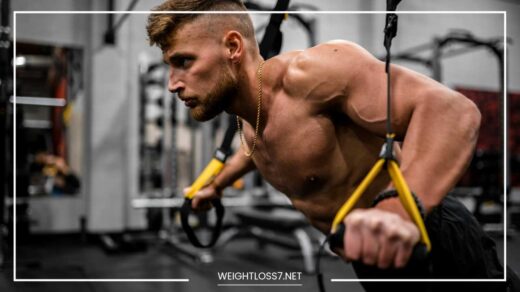HIIT Routines at Home

HIIT Routines at Home
Unleash Your Inner Athlete: The Ultimate Guide to HIIT Routines at Home
In today’s fast-paced world, finding the time and motivation for a comprehensive workout can feel like a Herculean task. Gym memberships, commuting, and the sheer time commitment can often deter even the most well-intentioned individuals.
But what if you could achieve significant fitness results in a fraction of the time, all within the comfort of your own home? Enter High-Intensity Interval Training (HIIT) – a revolutionary approach to exercise that’s as effective as it is convenient.
This comprehensive guide will delve deep into the world of HIIT routines at home, providing you with everything you need to know to embark on your fitness journey.
From understanding the fundamental principles of HIIT to designing your own personalized workouts and mastering essential exercises, we’ll equip you with the knowledge and tools to transform your body and elevate your overall well-being, all without stepping foot outside your door.
What Exactly is HIIT?
At its core, HIIT is a training technique that alternates between short bursts of intense exercise and brief periods of rest or lower-intensity activity.
This contrasts sharply with traditional steady-state cardio, where you maintain a consistent level of exertion for a prolonged period.
Think of it like this: instead of jogging at a moderate pace for 45 minutes, you might sprint for 30 seconds, followed by 30 seconds of walking, and repeat this cycle several times.
The beauty of HIIT lies in its efficiency. By pushing your body to its maximum or near-maximum capacity during the high-intensity intervals, you trigger a cascade of physiological benefits that far outweigh those achieved through longer, less intense workouts.
The recovery periods are equally crucial, allowing your body to briefly recuperate before the next burst of effort, enabling you to maintain a higher overall intensity throughout the workout.
The Powerhouse of Benefits: Why Choose HIIT at Home?
Opting for HIIT routines at home offers a plethora of advantages, making it an incredibly appealing choice for individuals of all fitness levels and lifestyles:
- Time Efficiency: This is perhaps the most significant draw of HIIT. You can achieve comparable, and often superior, results in workouts lasting as little as 10-30 minutes compared to longer, less intense sessions. This makes it ideal for busy individuals who struggle to carve out extended periods for exercise.
- No (or Minimal) Equipment Needed: Many effective HIIT exercises utilize your own body weight, eliminating the need for expensive gym equipment. This makes it incredibly accessible and convenient for home workouts. While some routines might incorporate light equipment like dumbbells or resistance bands, these are often optional and can be introduced as you progress.
- Enhanced Cardiovascular Health: The intense bursts of activity in HIIT workouts challenge your cardiovascular system, leading to significant improvements in heart health, lung capacity, and overall endurance. Studies have shown that HIIT can be more effective than steady-state cardio in improving VO2 max, a key indicator of cardiovascular fitness.
- Increased Calorie Burn: HIIT workouts are incredibly effective at burning calories, not just during the workout itself, but also in the hours that follow. This “afterburn effect,” scientifically known as Excess Post-exercise Oxygen Consumption (EPOC), occurs as your body works to recover from the intense exertion, leading to a higher overall calorie expenditure.
- Boosted Metabolism: Regular HIIT workouts can help to increase your metabolic rate, meaning your body burns more calories at rest. This can contribute to weight management and make it easier to maintain a healthy body composition.
- Convenience and Accessibility: Exercising in the comfort of your own home eliminates the barriers of travel time, gym schedules, and membership fees. You can squeeze in a HIIT workout whenever it fits into your day, whether it’s during your lunch break, before work, or after the kids are in bed.
- Variety and Adaptability: HIIT routines can be easily adapted to suit your fitness level, goals, and preferences. You can choose from a vast array of exercises and adjust the intensity and duration of the intervals to create workouts that are both challenging and engaging.
Getting Started: Laying the Foundation for Success
Before diving headfirst into intense workouts, it’s crucial to lay a solid foundation for success and ensure your safety:
- Assess Your Current Fitness Level: If you’re new to exercise or haven’t been active in a while, start slowly and gradually increase the intensity and duration of your workouts. Consider consulting your doctor before starting any new exercise program, especially if you have any underlying health conditions.
- Set Realistic Goals: Define what you hope to achieve with HIIT. Are you aiming for weight loss, improved cardiovascular health, increased strength, or a combination of these? Having clear goals will help you stay motivated and track your progress.
- The Importance of Warm-Up and Cool-Down: Never skip your warm-up! A proper warm-up prepares your body for the intense activity ahead by increasing blood flow to your muscles, improving flexibility, and reducing the risk of injury. A cool-down is equally important for gradually bringing your heart rate back to normal and promoting muscle recovery.
- Choosing the Right Exercises: Start with exercises that you are comfortable performing with good form. Focus on compound movements that engage multiple muscle groups simultaneously, such as squats, lunges, push-ups, and burpees. As you get fitter, you can gradually introduce more challenging exercises.
- Determining Interval Timing: The work-to-rest ratio is a key component of HIIT. For beginners, a 1:2 or 1:1 ratio (e.g., 30 seconds of work followed by 60 or 30 seconds of rest) is a good starting point. As you progress, you can increase the work interval and decrease the rest interval.
- Listen to Your Body: Pay attention to how your body feels during your workouts. Don’t push through pain, and take breaks when needed. It’s better to start at a manageable intensity and gradually increase it over time than to risk injury by doing too much too soon.
Your Arsenal of Exercises: Sample HIIT Moves for Home
Here’s a selection of effective bodyweight exercises that you can incorporate into your home HIIT routines:
- Jumping Jacks: A classic cardio exercise that gets your heart rate up quickly. Start with your feet together and arms at your sides. Jump your feet out to the sides while simultaneously raising your arms overhead. Reverse the movement to return to the starting position.
- High Knees: Stand with your feet hip-width apart. Bring one knee towards your chest, then quickly switch to the other knee. Continue alternating legs in a running motion, lifting your knees as high as comfortable.
- Butt Kicks: Stand with your feet hip-width apart. Bring one heel towards your glutes, then quickly switch to the other leg. Continue alternating legs in a running motion, trying to kick your buttocks with your heels.
- Squats: Stand with your feet shoulder-width apart, chest up, and core engaged. Lower your hips as if you’re sitting in a chair, keeping your back straight and your knees behind your toes. Push through your heels to return to the starting position.
- Lunges (Forward, Reverse, Lateral):
- Forward Lunge: Step forward with one leg, lowering your hips until both knees are bent at a 90-degree angle. Ensure your front knee stays behind your toes and your back knee hovers just above the ground. Push off with your front foot to return to the starting position.
- Reverse Lunge: Step backward with one leg, lowering your hips until both knees are bent at a 90-degree angle. Maintain good posture and push off with your back foot to return to the starting position.
- Lateral Lunge: Step out to the side with one leg, keeping the other leg straight. Bend your knee and lower your hips, keeping your back straight. Push off with your bent leg to return to the starting position.
- Push-ups (Variations): Start in a plank position with your hands shoulder-width apart. Lower your chest towards the ground by bending your elbows, keeping your body in a straight line. Push back up to the starting position.
- Beginner Modification: Perform push-ups on your knees.
- Advanced Variation: Try incline push-ups (hands elevated), decline push-ups (feet elevated), or plyometric push-ups (explosively pushing off the ground so your hands briefly leave the floor).
- Plank (Variations): Hold a straight line from your head to your heels, supported by your forearms or hands. Engage your core and avoid letting your hips sag or rise too high.
- Beginner Modification: Hold a plank on your knees.
- Advanced Variation: Try plank jacks (jumping your feet in and out), or plank with alternating arm/leg lifts.
- Burpees: A full-body exercise that combines a squat, push-up, and jump. Start standing. Drop into a squat position with your hands on the floor. Kick your feet back into a plank position. Perform a push-up (optional). Jump your feet back to the squat position. Explosively jump up into the air with your arms overhead.
- Mountain Climbers: Start in a plank position. Bring one knee towards your chest, then quickly alternate with the other knee, mimicking a running motion. Keep your core engaged and your hips stable.
- Russian Twists: Sit on the floor with your knees bent and feet slightly off the ground. Lean back slightly, keeping your back straight. Twist your torso from side to side, engaging your core. You can hold a light weight or water bottle for added intensity.
- Glute Bridges: Lie on your back with your knees bent and feet flat on the floor, hip-width apart. Engage your glutes and lift your hips off the ground until your body forms a straight line from your shoulders to your knees. Squeeze your glutes at the top and slowly lower back down.
Crafting Your Personalized Home HIIT Routine
Designing an effective HIIT routine involves considering several factors:
- Your Fitness Level: Beginners should start with shorter work intervals and longer rest periods, gradually increasing the intensity and duration as they get fitter. More advanced individuals can opt for longer work intervals, shorter rest periods, and more challenging exercises.
- Your Fitness Goals: If your goal is primarily cardiovascular improvement, focus on exercises that elevate your heart rate significantly, such as jumping jacks, high knees, and burpees. For strength and muscle endurance, incorporate exercises like squats, lunges, and push-ups.
- Your Time Availability: Tailor the duration of your workout to fit your schedule. Even a 15-20 minute HIIT session can be highly effective.
- Structuring Your Workout: A typical HIIT workout structure includes:
- Warm-up (5-10 minutes): Light cardio exercises like jogging in place, jumping jacks, arm circles, and dynamic stretches.
- High-Intensity Intervals (e.g., 30-60 seconds): Perform your chosen exercises at maximum or near-maximum effort.
- Low-Intensity Intervals/Rest (e.g., 15-60 seconds): Active recovery like walking in place or complete rest.
- Repeat the High- and Low-Intensity Intervals (for a set number of rounds or time).
- Cool-down (5-10 minutes): Static stretches, holding each stretch for 20-30 seconds.
Sample HIIT Routines
Beginner (15 minutes):
- Warm-up: 5 minutes of light cardio and dynamic stretching.
- Round 1: Jumping Jacks (30 seconds), Rest (60 seconds)
- Round 2: Squats (30 seconds), Rest (60 seconds)
- Round 3: High Knees (30 seconds), Rest (60 seconds)
- Round 4: Push-ups on Knees (30 seconds), Rest (60 seconds)
- Repeat the circuit 2 times.
- Cool-down: 5 minutes of static stretching.
Intermediate (20 minutes):
- Warm-up: 5 minutes of light cardio and dynamic stretching.
- Round 1: Burpees (45 seconds), Rest (30 seconds)
- Round 2: Lunges (alternating legs, 45 seconds), Rest (30 seconds)
- Round 3: Mountain Climbers (45 seconds), Rest (30 seconds)
- Round 4: Plank (45 seconds), Rest (30 seconds)
- Repeat the circuit 3 times.
- Cool-down: 5 minutes of static stretching.
Advanced (25 minutes):
- Warm-up: 5 minutes of light cardio and dynamic stretching.
- Round 1: Jump Squats (60 seconds), Rest (15 seconds)
- Round 2: Push-ups (60 seconds), Rest (15 seconds)
- Round 3: High Knees (60 seconds), Rest (15 seconds)
- Round 4: Burpees with Tuck Jump (60 seconds), Rest (15 seconds)
- Round 5: Russian Twists (60 seconds), Rest (15 seconds)
- Repeat the circuit 2 times.
- Cool-down: 5 minutes of static stretching.
Frequency of HIIT Workouts
Aim for 2-3 HIIT sessions per week with rest days in between to allow your body to recover.
Important Considerations and Safety First
While HIIT is highly effective, it’s crucial to prioritize safety:
- Focus on Proper Form: Maintaining correct form during each exercise is paramount to prevent injuries. If you’re unsure about the proper technique, watch videos or consult a fitness professional.
- Stay Hydrated: Drink plenty of water before, during, and after your workouts to stay hydrated.
- Fuel Your Body: Consume a balanced diet that provides you with the energy you need for your workouts. Consider a light meal or snack containing carbohydrates and protein 1-2 hours before your HIIT session.
- Rest and Recovery: Allow your body adequate time to rest and recover between HIIT sessions. This is crucial for muscle repair and preventing overtraining.
- Know When to Consult a Doctor: If you experience any pain or discomfort during your workouts, stop immediately and consult with your doctor. Individuals with pre-existing health conditions should always seek medical advice before starting a new exercise program.
Taking Your Home HIIT to the Next Level
As you become fitter and more comfortable with HIIT, you can gradually increase the challenge:
- Incorporate Light Equipment: Introduce resistance bands, dumbbells, or a jump rope to add resistance and intensity to your exercises.
- Increase Intensity or Duration: Gradually increase the duration of your high-intensity intervals or decrease the duration of your rest periods.
- Try Different Exercise Variations: Explore more challenging variations of the exercises you already know or introduce new exercises to keep your workouts engaging and continue challenging your body.
Final Thoughts: Your Journey to a Fitter You Starts Now
HIIT routines at home offer a powerful and convenient way to achieve your fitness goals. By understanding the principles of HIIT, mastering essential exercises, and designing personalized workouts, you can unlock a world of benefits, from improved cardiovascular health and increased calorie burn to enhanced time efficiency and accessibility.
Remember to prioritize safety, listen to your body, and gradually progress as you get fitter. The journey to a healthier, fitter you starts right here, within the four walls of your home. So, lace up your (imaginary) sneakers, embrace the intensity, and unleash your inner athlete!

















